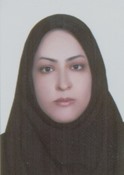Program Information
The Effect of Breast Phantom Composition On Dose Distribution in Accelerated Partial Breast Irradiation Using Strut-Adjusted Volume Implant (SAVI) Brachytherapy
M Papie1,2 , R Faghihi1 , S Sarshogh1 , S Sina1,2*, (1) School of Mechanical engineering, Shiraz University, Shiraz, Iran, (2) Radiation Research Center, Shiraz University, Shiraz, Iran
Presentations
SU-I-GPD-T-30 (Sunday, July 30, 2017) 3:00 PM - 6:00 PM Room: Exhibit Hall
Purpose: Long period treatments in teletherapy are not suitable for old and working patients,and those living far from the clinics. APBI with HDR brachytherapy has been a suitable alternative for these patients because of its limited number of fractions. The objective of this study is To evaluate the effects of breast phantom material composition on dose distribution caused by SAVI-brachytherapy using MCNP5.
Methods: A cavity was simulated in breast phantom as lumpectomy cavity. SAVI with 8 peripheral source channels was simulated in the breast phantom. Twelve sources were simulated inside the central lumen, and the eight peripheral lumens were loaded with thirteen Ir-192 sources. To score the dose distribution, the breast, and body phantoms were divided in small cubical cells. The dose distribution inside nine phantoms containing different materials i.e. fat, gland, ICRU-44 breast, and normal breast tissue (as suggested in TG-186), was compared with water phantom (as suggested by TG-43). To be more precise in material specifications, CT images of five patients were segmented using Amira 3D software, and the percentages of fat and glandular tissues of their breasts were obtained from the images. Then the information of patients was used for defining the tissue phantoms in MC simulation. The dose distribution in these phantoms were also compared with water phantom.
Results: The results indicates that in the PTV of all simulated phantoms, the percentage difference between the dose in water(TG-43), and the dose in other phantoms are much less than 3%. The percentage difference in other points of breast are also found to be less than 5%. The maximum difference is found in the phantom containing calcification.
Conclusion: The TG-43-based TPSs perform their calculations in water phantom. The results of this study indicates that for APBI, TG-43 algorithm can be used in treatment planning systems without significant errors.
Contact Email:
